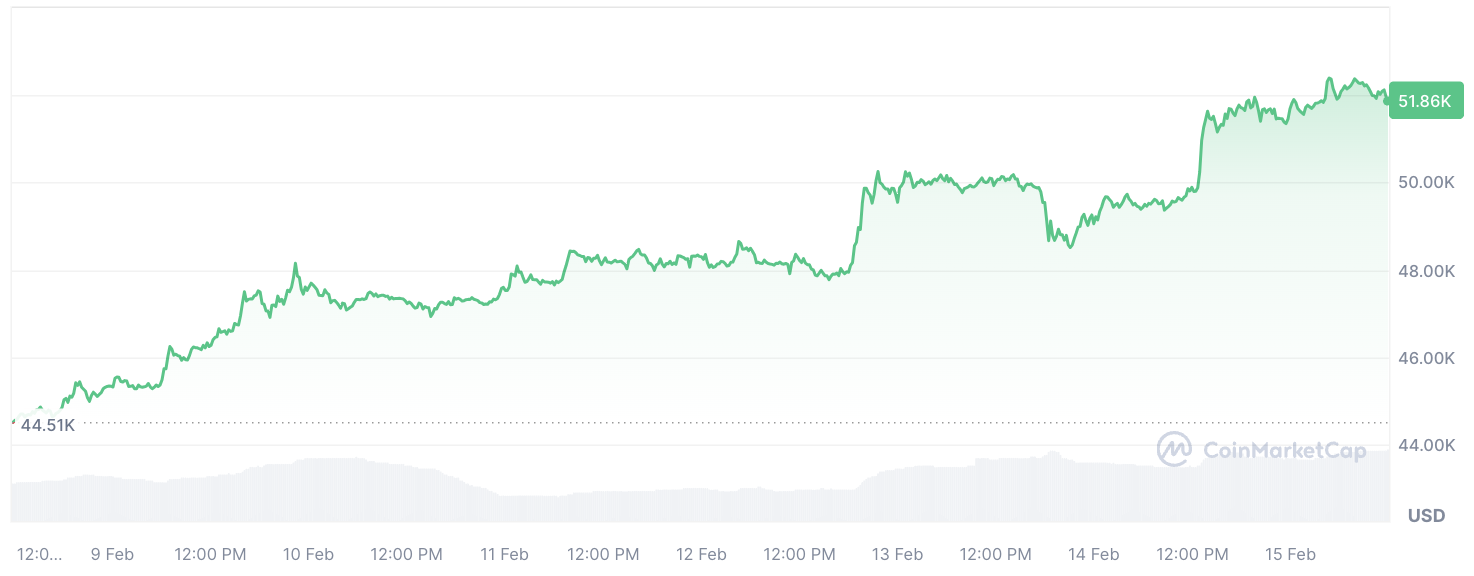
Disclaimer: The opinions expressed by our writers are their own and do not represent the views of U.Today. The financial and market information provided on U.Today is intended for informational purposes only. U.Today is not liable for any financial losses incurred while trading cryptocurrencies. Conduct your own research by contacting financial experts before making any investment decisions. We believe that all content is accurate as of the date of publication, but certain offers mentioned may no longer be available.
MicroStrategy cofounder Michael Saylor, a notable figure in the cryptocurrency sphere, has recently provided insight into Bitcoin's future price trajectory. With Bitcoin surpassing the $1 trillion market capitalization milestone and reaching a valuation of $52,500, Saylor's comments have sparked considerable interest and discussion within the industry.
Saylor's statement, grounded in factual analysis rather than speculative conjecture, presents a clear target for Bitcoin's valuation. He explicitly stated that "the price of BTC is still less than $0.06 million," offering a precise reference point for market observers to consider.

The significance of Saylor's assertion extends beyond mere numerical value. It implies two distinct perspectives on Bitcoin's trajectory. First, it suggests a near-term target of $60,000 for Bitcoin, which closely aligns with the cryptocurrency's historical peak of $69,000. Second, it hints at a broader, long-term objective — a price target approaching $1 million per Bitcoin.
MicroStrategy, under Saylor's stewardship, has accumulated a substantial Bitcoin portfolio, currently comprising 190,000 BTC. With an unrealized profit of $3.5 billion, the company's strategic embrace of Bitcoin underscores Saylor's unwavering confidence in its potential for sustained growth.
Whether Bitcoin reaches $60,000 in the short term or aims for higher valuations nearing $1 million, Saylor's perspective serves as a guiding light for those seeking clarity in their cryptocurrency investment strategies.


 Dan Burgin
Dan Burgin Vladislav Sopov
Vladislav Sopov U.Today Editorial Team
U.Today Editorial Team